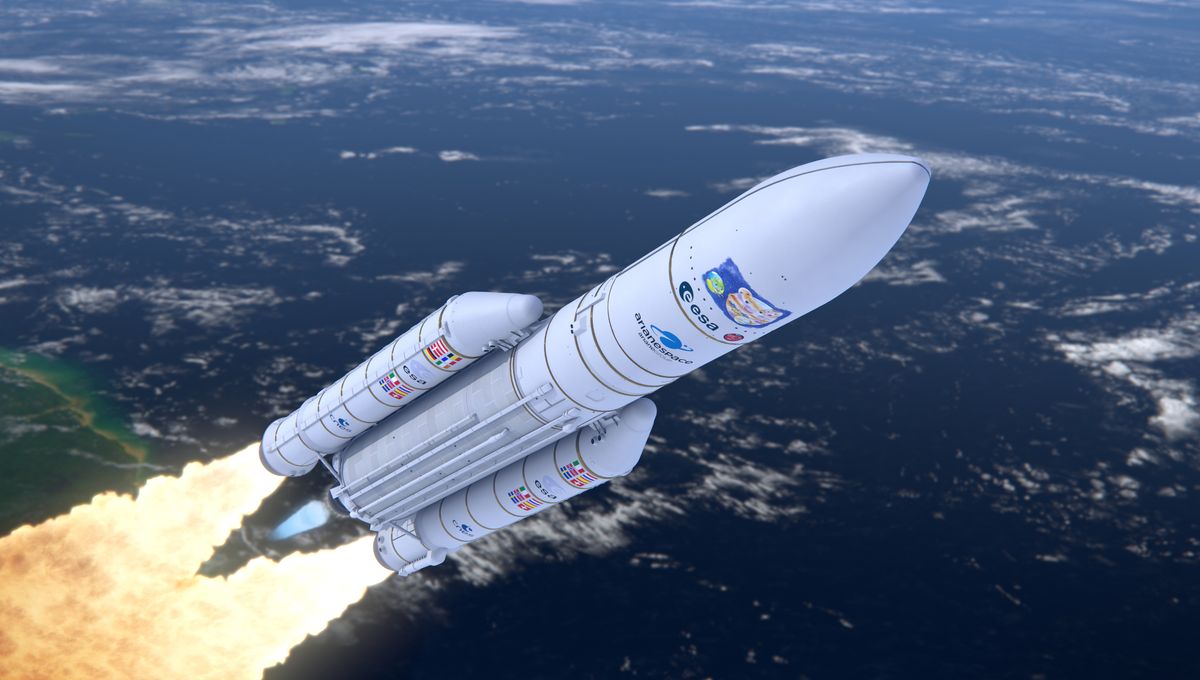
Tomorrow, the European Space Agency (ESA) will launch the first-ever European mission to Jupiter. The Jupiter Icy Moons Explorer, also known as JUICE, has a big mission ahead of it, providing new insights into the Jovian system with a focus on the three icy moons of Jupiter: Europa, Ganymede, and Callisto.
The mission will travel to Jupiter over the next eight years, a period which will include three flybys of Earth (the last one in 2029), one of Venus, and one of asteroid 223 Rosa in the main Asteroid Belt. In July 2031, it will first fly past Ganymede and then enter an orbit around Jupiter.
“We have two big topics for the JUICE mission. The first one is to study what we call habitable places. Do we have places around a planet like Jupiter where we can have habitable conditions or conditions interesting for life? We have some good evidence that there is a lot of liquid underneath the surfaces of some of these icy moons,” Dr Olivier Witasse, a planetary scientist working on the scientific aspects of the Mission, told IFLScience.
“The second topic is Jupiter,” he continued. “It is a very interesting planet, a miniaturized solar system with many many moons, dust rings, and a huge magnetic field that rotates very quickly. We would like to understand the system as a whole. And to maybe have a kind of model for exoplanets and extrasolar systems.”
How to watch ESA’s JUICE mission launch
The Ariane V rocket carrying JUICE will launch from Europe’s spaceport in French Guiana at 12:15 pm UTC (8:15 am ET) on April 13, 2023, and will be streamed live by the European Space Agency’s WEB TV from 11:45 pm UTC (7:45 am ET). Everything going well, JUICE will be released 28 minutes after the launch at around 12.45 pm UTC, beginning its trek to Jupiter.
The spacecraft will fly past Europa twice, Ganymede 12 times, and Callisto 21 times. Callisto has the oldest surface in the Solar System and may have a liquid ocean. If there is one, JUICE will find it.
When JUICE finally enters into orbit around primary target Ganymede it will become the first spacecraft orbiting a moon other than ours. Ganymede is the biggest moon in the Solar System and the only one with a magnetic field, and JUICE will dedicate the latter part of its mission investigating the potential habitability of it.
“We don’t go there [to Jupiter] very often, so once we go there, we’re getting everything we need,” Dr Witasse told IFLScience. “We have a great suite of payload and I think the science investigations are quite exciting!”
The 2030s will bring new insights into the Jovian system – and maybe even evidence that life could or does exist elsewhere in the Solar System.
Source Link: We’re Going To Jupiter! How To Watch ESA’s JUICE Mission Launch Tomorrow